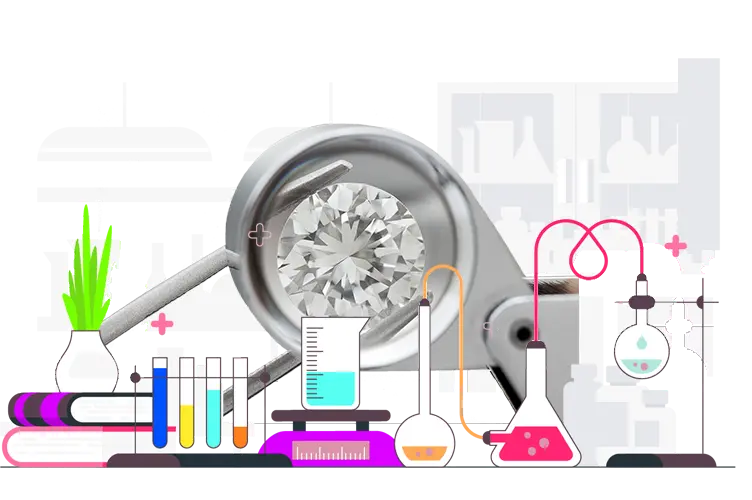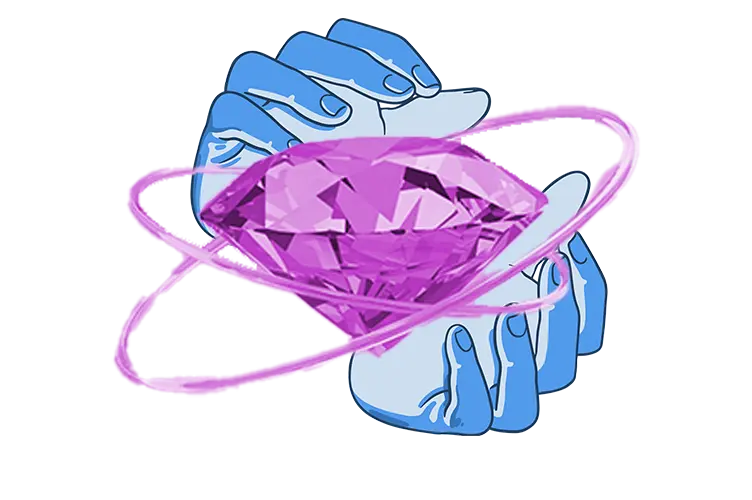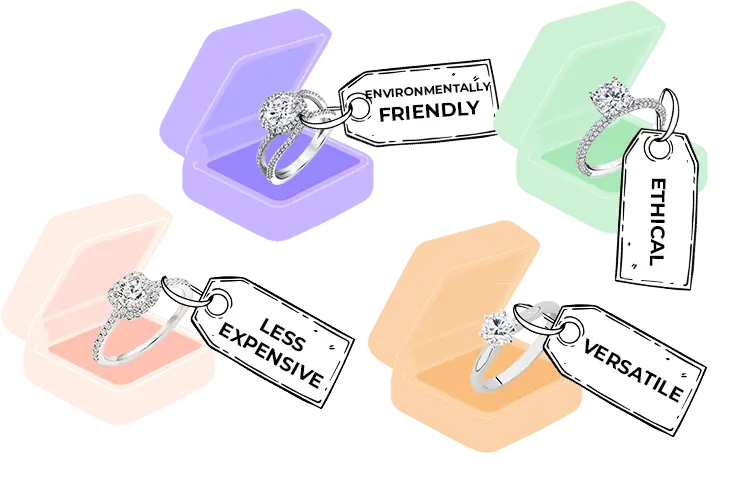

Lab grown diamonds, also known as man-made diamonds or cultured diamonds, are diamonds manufactured in a laboratory rather than being mined in the earth. Their popularity has increased in recent years thanks to their lower environmental impact and more ethical business practices.
Lab created diamonds are created in a controlled environment, so there is no damage to the environment. They are also more affordable than natural diamonds due to their fast production time which is a few weeks rather than millennia for natural diamonds.
However, they have the exact same chemical and physical properties as natural diamonds, making them virtually interchangeable and identical to the naked eye. The only way to tell them apart is for a Gemological Institute of America gemologist to evaluate it.
The lab grown diamond industry is currently worth $5.9 billion and makes up to 9% of the total diamond market. Catering to huge demand, it is expected to grow significantly in the next few years.
Lab grown diamonds have been around since the ‘50s, but they’ve only recently become popular as an alternative to natural diamonds. In the 1990s, they began to be marketed as a viable alternative to natural diamonds. Using cutting-edge technology, there are two main methods for growing diamonds in a lab:

The carbon source is placed in a furnace and heated to a very high temperature. This causes the carbon atoms to break free from the source and form vapor. Next, the vapor is injected into a chamber that contains the diamond seed crystal. The vapor coats the seed crystal and builds up over time until a diamond is formed.
The HPHT process begins by heating the pure carbon to a temperature of 1,500 degrees Celsius. Next, the carbon is placed in a pressure vessel and subjected to a pressure of 50,000 atmospheres.
This pressure is equivalent to the pressure found at the bottom of the ocean. Finally, the carbon is heated to a temperature of 4,000 degrees Celsius. At this temperature, the carbon atoms crystallize and form diamonds.
While chemically, natural diamonds and man-made ones are identical, there are a few differences in their appearance. The trace amount of nitrogen found in natural diamonds gives them a yellow or brown tint. Lab diamonds are colorless because they do not contain any nitrogen. Most untrained eyes can’t see this slight color difference.
Only trained geological experts know how to tell lab grown diamonds from natural diamonds using specialized tools like a spectrometer. Natural diamonds will show the characteristic absorption lines associated with nitrogen, while lab grown diamonds will not.
Natural diamonds also show microscopic imperfections because of the way they are created in the earth and the manner in which they collect them. Lab diamonds, however, are physically perfect.

A lot of people often ask, “Are lab grown diamonds as good as natural diamonds?” Before drawing a comparison between lab grown and natural diamonds, you should know that lab grown diamonds offer all of the same features as natural diamonds including cut clarity, color, and carat weight, and are considered real diamonds by the U.S. Federal Trade Commission.
While the type of diamond you buy may be a personal preference, there are many benefits to purchasing lab grown diamonds over natural diamonds.
Lab grown diamonds are typically about 30% cheaper than natural diamonds. This is because the process of making a diamond in a lab is much less expensive and time-consuming than mining a diamond in the earth. Plus, there is no shortage to lab created diamonds, while natural diamonds are a scarce resource, further inflating the price.
When you buy a lab grown diamond, you are supporting sustainable practices and helping to reduce the environmental impact of the diamond industry.
Lab grown diamonds are also conflict-free, meaning they have not been sourced from areas where violence or human rights abuses have occurred.
You can find a broader range of designs for lab grown diamonds than for natural diamonds. This is because lab grown diamonds can be made in any color or shape, while natural diamonds are limited to those that occur in nature.
Lab grown diamonds are graded in a similar way to natural diamonds. When grading lab grown diamonds, the six main factors kept in mind are: shape, cut, color, clarity, carat weight, and diamond fluorescence.
The excellence of each of these factors can make a difference in the price of a diamond. Prices for lab grown diamonds are usually based on the Rapaport pricing method, which can change up to 5% in one month.
There are two main differences between lab grown and natural diamonds that grading takes into account.

The decision to buy a diamond engagement ring should not be taken lightly. There are a few factors to consider before purchasing one.
The first is your partner’s values and ethics. Some people may not want to purchase a diamond because they are worried about how the diamond was sourced. If this is your partner, then you may want to consider a lab grown diamond.
Lab grown diamonds can be more affordable than natural diamonds because there is no need for mining and processing. This also means that the quality of the diamond is consistent since it is made in a lab.
Your understanding of your partner’s style matters the most for them to love the ring you choose. Some people prefer traditional diamonds, while others prefer something more unique. It’s easier to create a unique look in lab grown diamonds. A growing number of brands, including Brilliant Earth, De Beers, and James Allen carry lab grown diamonds.
Make sure you start your future on the right foot by picking the perfect engagement ring for your soon-to-be fiancée. Whether it’s a natural or man-made diamond or another unique gem, take your partner’s tastes and style into account to ensure you check all the boxes.
But don’t forget the rest. Research and plan your perfect proposal using The Groom Club’s vast collection of tips, insights, and ideas for grooms. To learn about all aspects of engagements (even tips for when you don’t know where to start), wedding planning, and more, go to our latest articles!
Make sure to follow The Groom Club on Facebook, Twitter, and Instagram for more tips and ideas on how to plan your big day.